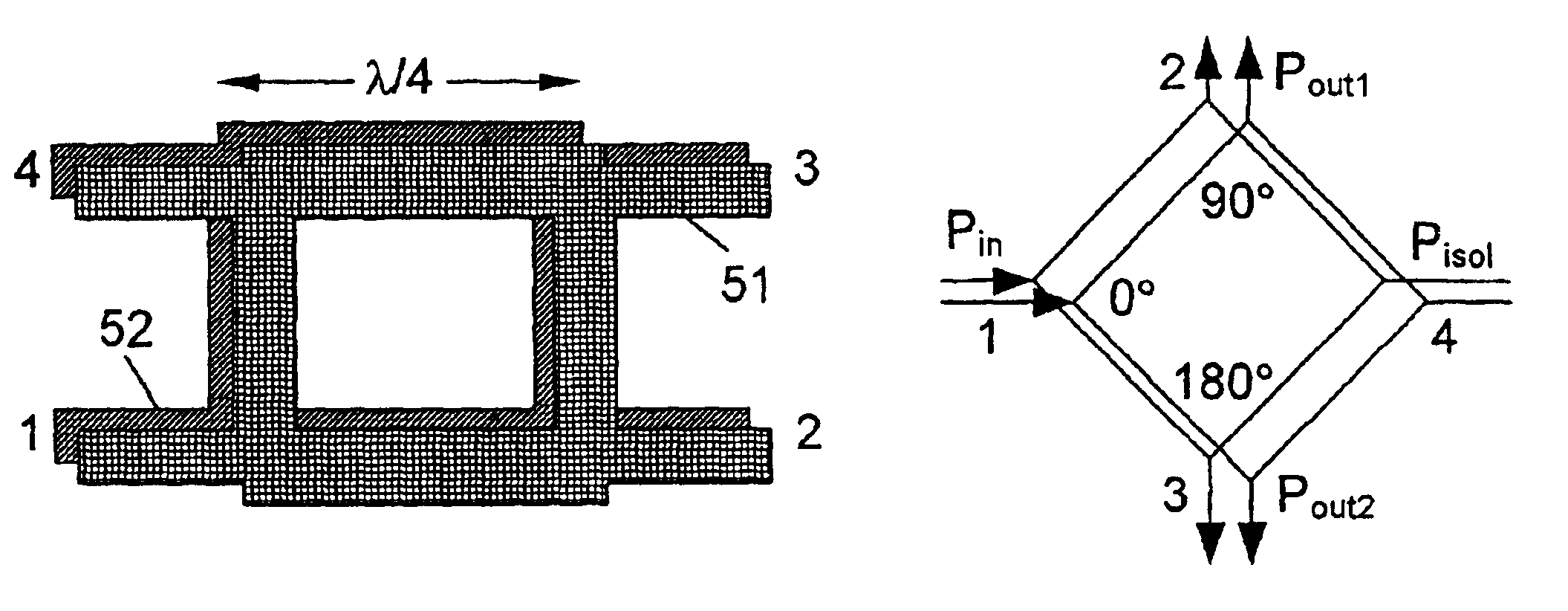Radio frequency amplifying circuit
a technology of frequency amplifying circuit and frequency, applied in the direction of amplifiers with coupling networks, waveguides, amplifiers with semiconductor devices/discharge tubes, etc., can solve the problems of increasing distortion, unsatisfactory value of vswr, and increasing problems, so as to achieve low ripple
- Summary
- Abstract
- Description
- Claims
- Application Information
AI Technical Summary
Benefits of technology
Problems solved by technology
Method used
Image
Examples
Embodiment Construction
First some prior art circuits will be described for comparison with circuits according to the invention. Thus FIG. 1 shows a prior art power amplifier 1 of the one-transistor amplifier type for use in a portable radio communications device. Although the amplifier in a practical circuit will typically comprise several additional components, it is here illustrated as consisting of a transistor 2 and an impedance 3. The impedance 3 can be any type of impedance, e.g. a current generator having a very high impedance at radio frequencies. The input to the power amplifier 1 comes from a radio circuit 4, and the amplified output is delivered at the out-terminal. The output power from the amplifier is connected to an antenna 5, but because the antenna 5 will normally present an impedance mismatch to the output of the power amplifier 1, an isolator 6 is normally inserted between the output of the power amplifier 1 and the antenna 5 in order to improve the VSWR (Voltage Standing Wave Ratio) of...
PUM
 Login to View More
Login to View More Abstract
Description
Claims
Application Information
 Login to View More
Login to View More - R&D
- Intellectual Property
- Life Sciences
- Materials
- Tech Scout
- Unparalleled Data Quality
- Higher Quality Content
- 60% Fewer Hallucinations
Browse by: Latest US Patents, China's latest patents, Technical Efficacy Thesaurus, Application Domain, Technology Topic, Popular Technical Reports.
© 2025 PatSnap. All rights reserved.Legal|Privacy policy|Modern Slavery Act Transparency Statement|Sitemap|About US| Contact US: help@patsnap.com



